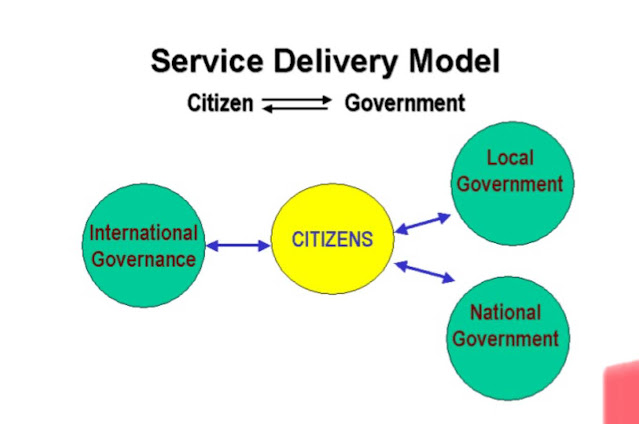Short Note on G2C2G(Government to Citizen to Government to Model)/Interactive-Service Model
Principle
Interactive-Service Model in many ways is a consolidation of the earlier digital governance models and opens up avenues for direct participation of individuals in the governance processes. This model fully captures the potential of ICT and leverages it for greater participation, efficiency, and transparency in the functioning of government as well as savings in time and costs relating to decision making. The Interactive-Service Model makes possible various services offered by the government to be directly accessible to citizens. It creates an interactive government-to-consumer-to-government (G2C2G) channel in various functions such as the election of government officials (E-ballots), filing of tax returns, procurement of government services, sharing of concerns, and providing expertise, conducting opinion polls on public issues, and grievance redressal.
Applications
This model could be applied in the following possible ways:
• To establish an interactive communication channel with key policy-makers and members of planning commissions.
• To conduct electronic ballots for the election of government officials and other office-bearers.
• To conduct public debates/opinion polls on issues of wider concern before the formulation of policies and legislative frameworks.
• Filing of grievances, feedback, and reports by citizens with the concerned governmental body. Establishing decentralized forms of governance.
• Performing governance functions online such as revenue collection, filing of taxes, governmental procurement, payment transfer, etc.
Example of organization for Interactive service model
http://www.gyandoot.net/gyandoot/intranet.html
India: Gyandoot Gyandoot is an intranet in the Dhar district connecting rural cybercafes catering to the everyday needs of the masses. The site has the following services to offer in addition to the hope that it has generated by networking, the first district in the state of Madhya Pradesh in India
- Commodity/ Agricultural Marketing Information System
- Copies of land maps
- On-Line Registration of Applications
- Public Grievance Redressal
Evaluation
- This model is more embedded in digital-governance initiatives in the developed countries and has often been proposed for implementation in developing countries. Such forms of solution transfer may not be very effective.
- The model is on the higher end of technology reliance as compared to the other models. This makes it difficult to replicate in developing countries in the absence of individual and secure ICT access.
- Various other issues also need to be considered carefully before such blind duplication can be attempted in developing countries.
- However, the trend is definitely in this direction and sooner or later will be implemented in all the countries with due modifications for local adaptation.



Comments
Post a Comment